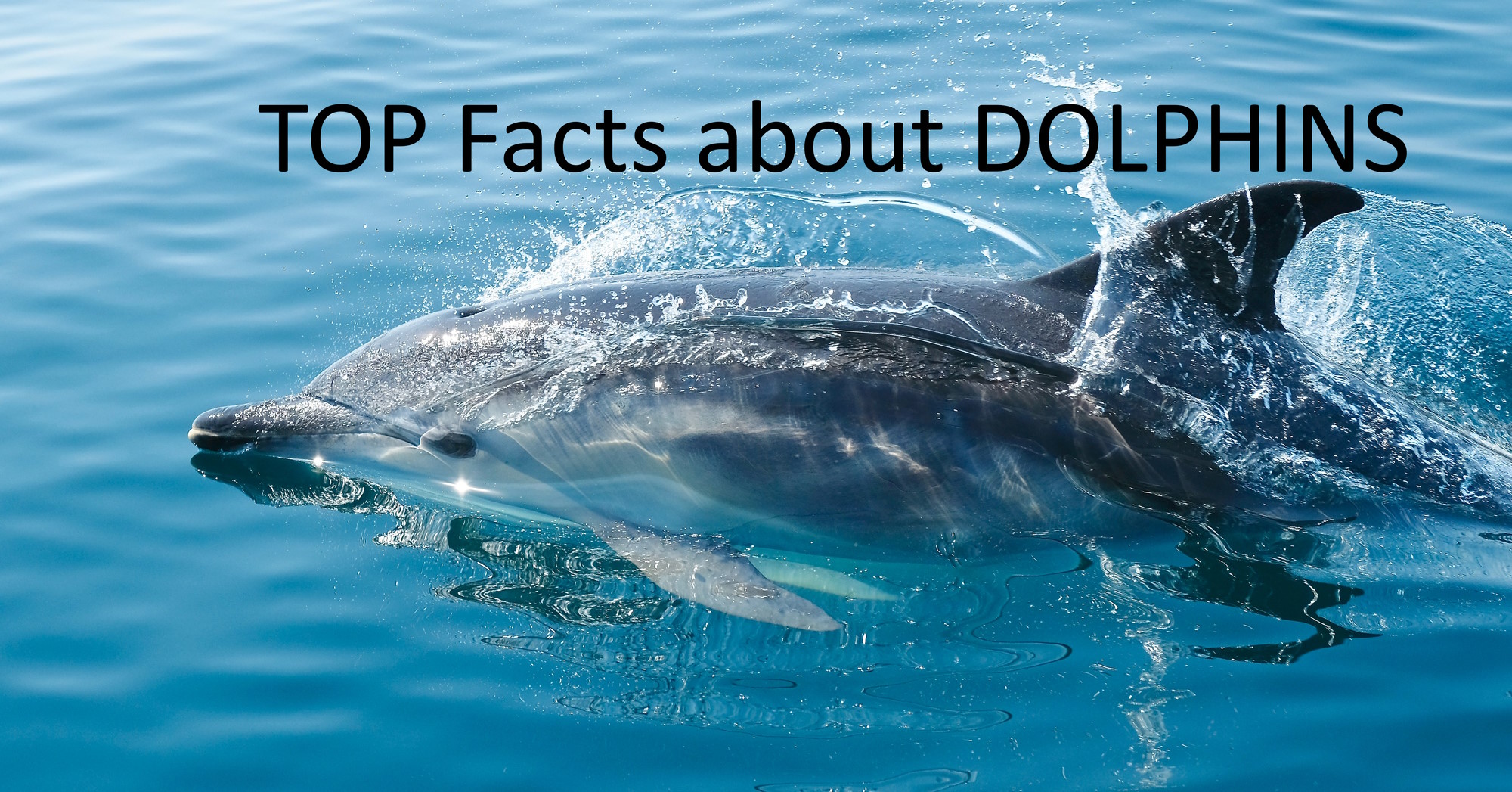By MSc Gvapo Tripinovic and Adam Tripinovic
Hello everyone, my eight-year-old son Adam and I made another educational article and YouTube video. This time about Dolphins.
Top facts about dolphins
Dolphins are one of the most beloved and fascinating creatures in the ocean.
These intelligent mammals have captured people’s hearts for generations with their playful nature and unique abilities.
Yet, by many, dolphins are considered the dominant apex predators of the oceans.
Stay with us on this 10-minute journey and find out why.
What are dolphins
Dolphins are a type of marine mammal known as cetaceans, which also includes whales and porpoises.
Their size varies from the smallest New Zealand, with just 4 feet or 120 centimeters long to Orca, 32 feet or close to 10 meters long.
Yes, although called Killer Whales, Orcas are dolphins who tend to eat dolphins from time to time.
The origin of the name “dolphin” can be traced back to ancient Greece, where it meant “a fish that gives birth.” Dolphins have the shape of fish, but instead of laying eggs, they give birth to live offspring.
Dolphins are descendants of the land-dwelling mammal Pakiectus some 50 million years ago.
Physical abilities are another remarkable characteristic of dolphins. They are speedy swimmers, reaching up to 60 kilometers or 37 miles per hour.
Dolphins and self-awareness
Self-awareness is the capacity to detect and comprehend one’s own mental condition. This capacity is considered a hallmark of superior cognitive abilities.
Scientists have observed dolphins displaying self-awareness in mirrors, indicating their superior cognitive capacities.
Only a few other species can do the same: humans, primates, elephants, and certain birds.
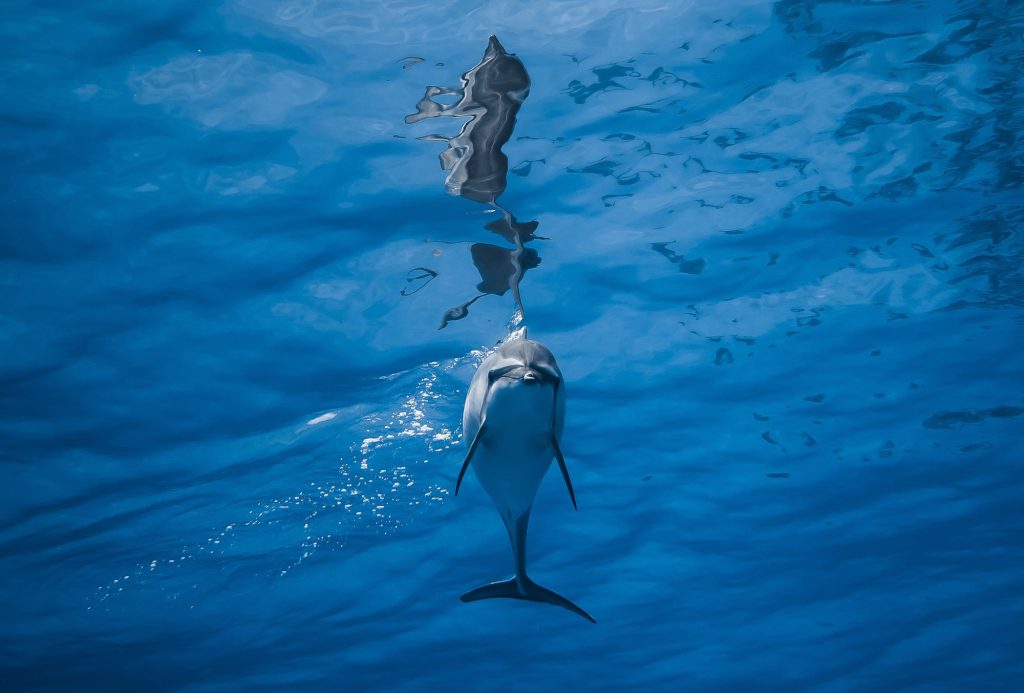
In 2001, Dr. Diana Reiss and Dr. Lori Marino conducted a study in which they observed one of the most well-known cases of dolphin self-awareness. Hera, a captive bottlenose dolphin, was given a mirror and studied for several weeks in this study. Hera could recognize herself in the mirror and use it to investigate sections of her body she could not see otherwise. She was also observed inspecting her mirror reflection and signaling to the researchers.
Another example is a 2010 study undertaken by Dr. Jason Bruck and Dr. Louis Herman. They placed a mark on the dorsal fins of a group of dolphins. The dolphins could detect the mark on their bodies and spent more time in front of the mirror inspecting it.
Dolphins’ unique ability – the echolocation
Dolphins utilize their unique echolocation abilities to navigate and locate prey in the ocean. Echolocation is a biological sonar system that enables dolphins to emit high-frequency sound waves and listen for the echoes reflected back from objects in their environment. This allows them to detect objects’ position, shape, size, and movement in almost complete darkness or murky water.
Fish hunting is one example of how dolphins use echolocation to locate prey. They emit a sequence of clicks and then listen for the fish’s echoes. The echoes allow them to determine the fish’s distance, size, and location, which they then employ to capture their food.
In another instance, they use echolocation to avoid obstacles. Dolphins use echolocation to locate and avoid underwater obstacles, including rocks, coral reefs, and other structures.
Dolphins employ this skill to navigate, locate prey, avoid obstacles, and find and communicate with one another.
They can also use echolocation to identify the presence of sharks and other predators by sensing their vibrations.
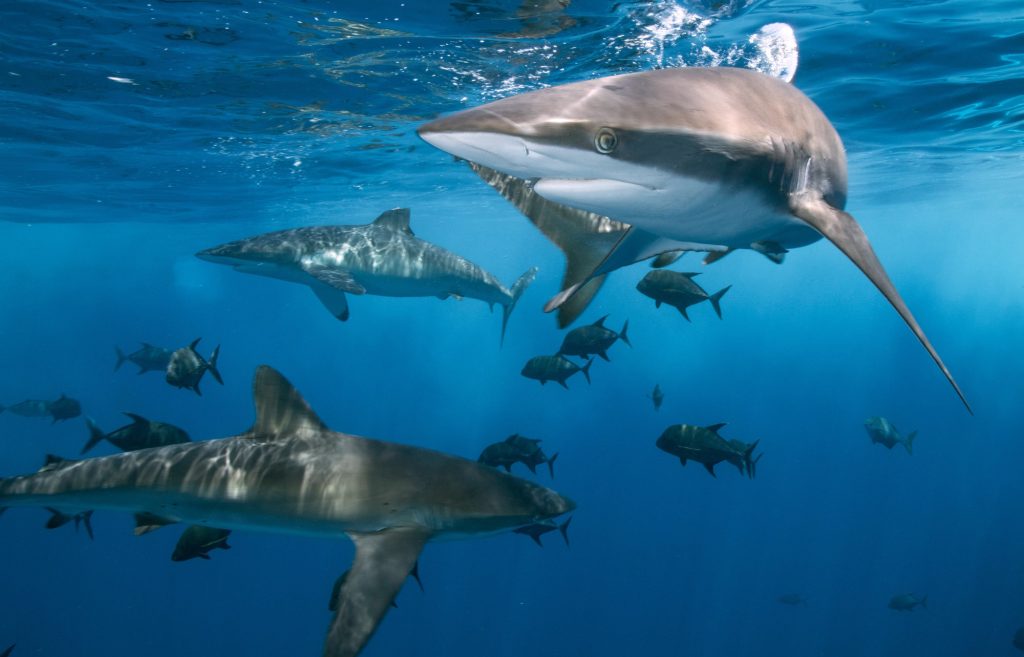
Dolphins can hold their breath for several minutes
Dolphins can dive deep into the ocean and hold their breath for several minutes. This unique physical ability lets them stay underwater for long periods of time.
Dolphins can also control how much blood goes to different parts of their bodies and how fast their hearts beat. This lets them save oxygen while diving.
Female females gestate for up to 12 months.
Dolphins have one baby, called a calf, every two to three years.
The calf depends on its mother’s milk and protection for several months or longer after birth.
The gestation period varies among dolphin species, lasting from 11 to 17 months.
Like the bottlenose dolphin, species with longer life spans have more extended gestation periods.
The baby tail comes out tail first as the calf would drown without the air if it were another way around.
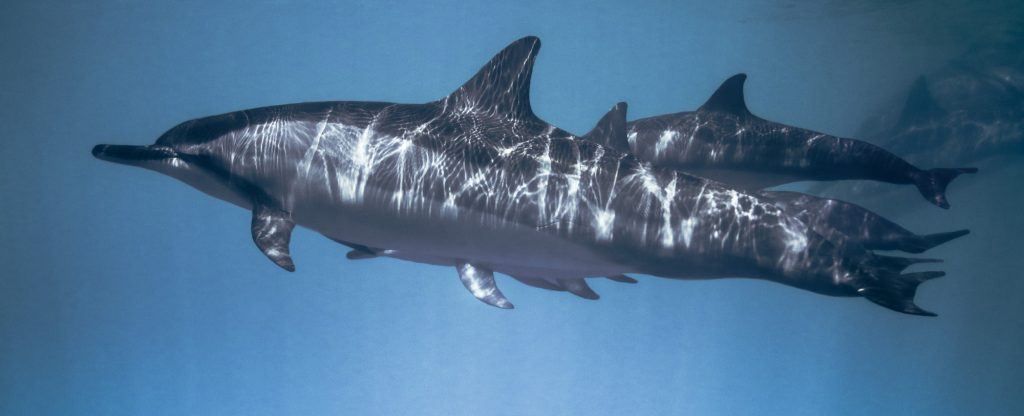
Dolphins’ altruistic behavior
Dolphins are also known for their altruistic behavior – deeds that advance the interests of others, even at the expense of one’s own interests.
Scientists have observed dolphins acting kindly toward others, such as saving people from sharks and other dangers, helping other animals, and aiding other dolphins in need.
This conduct implies that they can make deliberate choices to defend and assist others, even at the expense of their own well-being.
Freshwater dolphins
Freshwater dolphins are a type of dolphin that can live in rivers and lakes instead of the ocean. The most known are:
· The Ganges River dolphin.
· The Indus river dolphin.
· The Yangtze river dolphin.
· The Amazon river dolphin.
Freshwater dolphins have changed how they look and act so that they can live in freshwater. Their eyes are smaller, which suggests that they rely more on their hearing, especially echolocation, to find their way around and find food. They have a longer, more flexible snout that lets them find food in shallow water and move through narrow channels.

They are all in danger of extinction due to habitat destruction, pollution, and overfishing.
Dolphins’ predator side
Sharks may be fierce predators, but even the great white is afraid of the dolphins. More intelligent, agile, faster, and using group tactics, they will quickly surround the shark and relentlessly attack.
The heads of dolphins have very thick and very strong skin and act as a biological battering ram. They will use it to slam it into the shark’s soft stomach and gills with devastating effects.
Lone dolphins will be wise to swim away quickly, but a pack will do what they do best against the threats. They will attack.
Dolphins will usually act the same if humans are in danger of a shark. Help and protect the humans.
However, one dolphin species scares white sharks more than anything.
Orca. The killer whales. The largest representative of the dolphin family.
Orcas will attack sharks if there is not enough food to be found. Or simply because they can.
That’s why great white sharks prefer to flee away immediately if they sense the presence of killer whales.
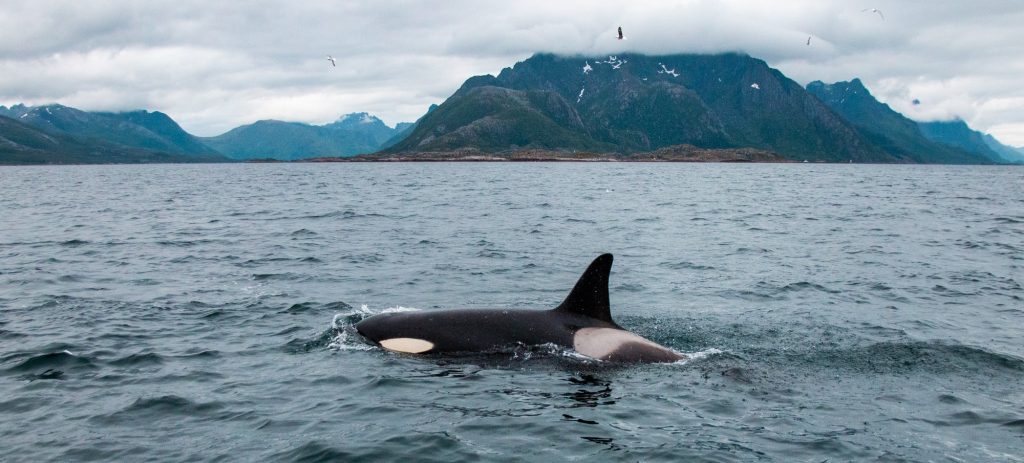
Dolphins’ dark side
Dolphin wars exist, and they are ruthless.
In that period, casualties are not uncommon.
During the mating season, dolphins are territorial and aggressive.
They can turn on one another, forming alliances against other dolphins and attacking intruders or competitors.
They can forcibly subdue females and take them from other groups by beating or even killing other dolphins.
Dolphins are highly intelligent apex predators who exhibit aggressive behavior in certain situations when they feel fear or perceive someone as a threat.

Half-brain sleep pattern
Fun fact breathing is a conscious movement for dolphins.
While humans have a breathing reflex and don’t think much about it, dolphins must remember to expel and inhale air.
Not to suffocate while sleeping, dolphins have a half-brained sleeping scheme.
One-half of their brain sleeps while the other half stays alert to enable the dolphin to keep surfacing for air when they need to and look out for dangers.
This process takes around four hours, two for each side, and they rarely sleep alone.
Sleeping with one eye open and moving up and down every few minutes to take fresh air is not something we would call a good sleep, but dolphins do just fine.
Three levels of alliance within the dolphin society
According to researchers, there are three levels of alliance within dolphin culture.
The closest relationships involve male pairs or trios working together for years to protect their females.
These grow into larger, second-order teams or alliances that can contain up to 14 individuals and continue functioning for 15 years or longer while stealing females from other groups.
Then there are the third-order alliances. We can think of them as “armies” that band together and count up to 100 members.
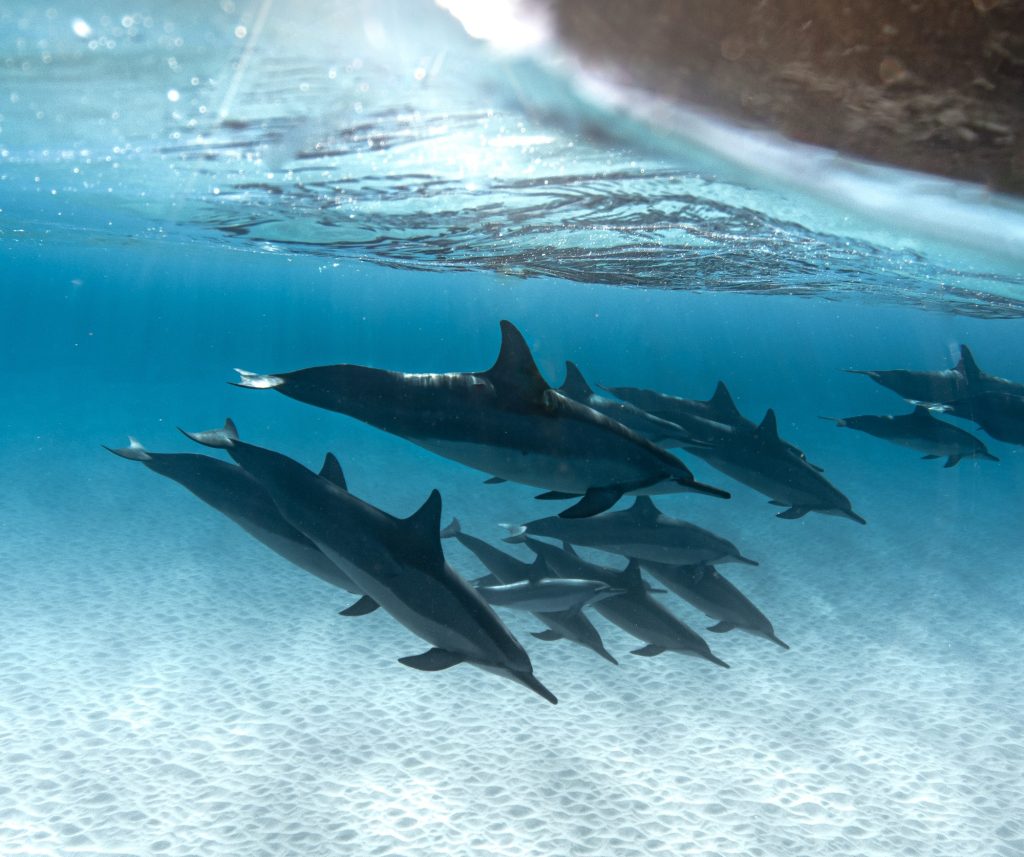
Dolphins use names.
They are the only species besides humans that we know of to refer to individuals in this way.
It is thought that as a calf, each dolphin makes its own “signature whistle,” a sound other dolphins use to call or greet it. That call, a name, stays for the rest of its life.
Dolphins’ big brains
The dolphin brain is one of the largest and most complex in the world: 1.6 kilograms or 3.5 pounds compared to ours, 1.3 kilograms or 2.9 pounds.
Even though elephants have bigger brains than humans, elephants are much larger than us, while dolphins are more like us in size.
On the other hand, dolphins have more than twice as many neurons in the neocortex as humans do. The neocortex is the largest and most recently evolved part of the brain.
In particular, the neocortex of long-finned pilot whales, a type of dolphin, has about 37.2 billion neurons.
In contrast, the neocortex of a human has about 16 billion neurons.
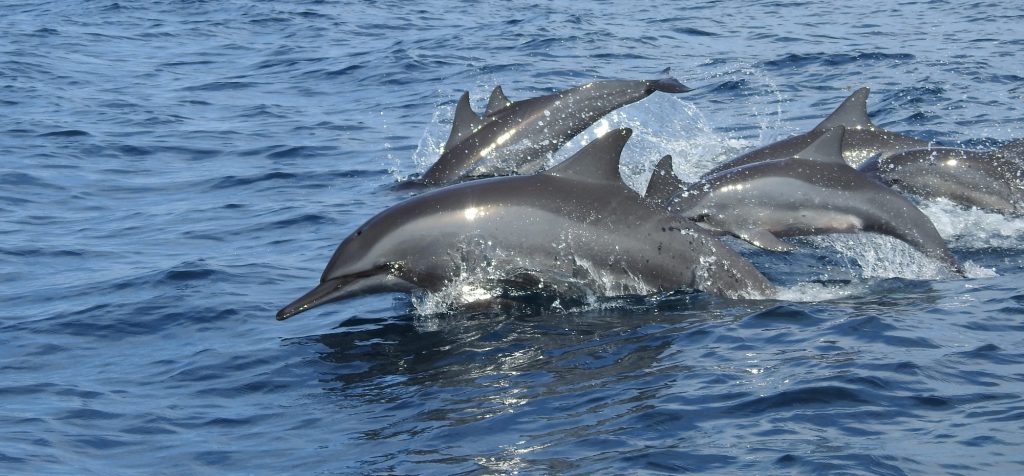
Dolphins’ lifespan
They live from 15 to 40 years, depending form the species.
Dolphins remain man’s aquatic best friend, and they’re way more likely to help than harm us.
We should always remember that dolphins are highly intelligent and complex wild animals. We should treat them with respect, understanding, and care so our friendship can continue.
We hope you enjoyed learning more about interesting animals today.
Remember to subscribe to our YouTube channel, Top 10 Facts, for more videos on different animals as we make them often, and to visit our website for more great articles frequently.
You can find more great articles and videos about animals here:
Alpacas, Ants Rescue Their Injured Friends, Butterflies, Cheetahs, Dolphins, Do Fish Sleep, Dogs – Which dog breeds are the smartest, Elephants, Great White Sharks, Sharks in aquariums, Snakes, Hummingbirds, Jellyfish, Lions, Pigeons, Red Pandas, Owls, Seagulls, Snails, Squirrels, and Wolves.
If you found this ant rescue story fascinating, be kind and share it with your friends.
And remember to return to our blog ParentingDad.com for more incredible insights into the fascinating world of nature.
Until next time, keep exploring and appreciating the wonders of our planet!
Adam and I wish you a great day. Stay well, and keep smiling.
Keep being curious and asking questions!
This article might contain links to the products, so we can get a small commission if you buy them. That way, you support this blog and our educational YouTube channel, for which I am thankful.
